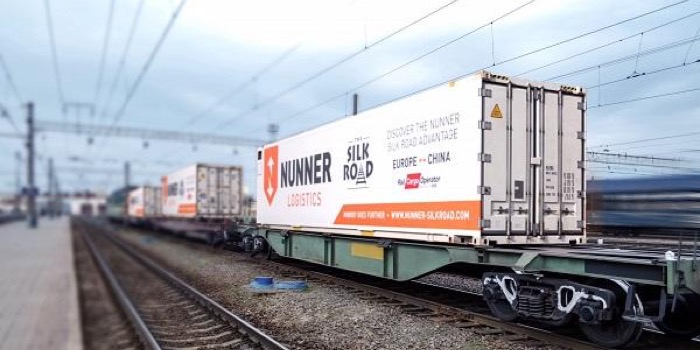
Port of Amsterdam connects to China by rail
From March 2018, the Port of Amsterdam will be part of a modern incarnation of the historical Silk Route. A direct railway connection is being constructed between the Chinese city of Yiwu (Shanghai region) and Amsterdam.
The first train to China is set to depart on March 14th 2018 from the TMA terminal (ACT Terminal) in Amsterdam’s Amerikahaven port. This terminal is working in partnership with Nunner Logistics, which will act as an expeditor.

The new railway connection links Europe to Eastern Asia through a Central Asian route. The historical Silk Route ceased to exist in the Middle Ages, when land-based trade gradually shifted to transport by sea.
For the Port of Amsterdam, the link to the new Silk Route is as historical as the traditional route itself. The railway link is a perfect opportunity to provide logistics customers access to a massive hinterland. The connection is faster than by ship and more affordable than by airplane. Port of Amsterdam CEO Koen Overtoom regards the connection as a valuable extension of the multimodal transport services currently available in Port of Amsterdam: “This dedicated connection will provide permanent access to a vast and remote hinterland, which is really unique. It will cement our already strong position as a European logistic hub and will enhance our short-sea connections to Britain and Scandinavia.”
Nunner Logistics operates as an agent for the Austrian-based Rail Cargo Group, the second-largest railway transport company in Europe. Both logistics services providers are working in association with the TMA terminal and are using this terminal for the storage and transhipment of all types of cargo, including steel to be transported to the hinterland by rail, barge and truck.
The Silk Route started out as a network of caravan routes through Central Asia, which was used for many centuries as a trade route between China and East Asia on one side and the Middle East and Mediterranean on the other. The Silk Route was the main path connecting East and West, China and Europe. The new route, which spans a total of length of 11,000 km of railroad, runs from the Chinese mainland to Europe, traversing Mongolia and Russia. The route owes its name to the lucrative silk trade, which emerged during the Han Dynasty between 206 BCE and 220 CE.
The Silk Route is part of China’s ‘One Belt, One Road’ programme. The train journey takes 16 to 18 days – almost twice as fast as by ship. Carbon emissions are 20 times lower than those produced by air cargo.
For more information visit www.portofansterdam.com
11th Dec 2017













